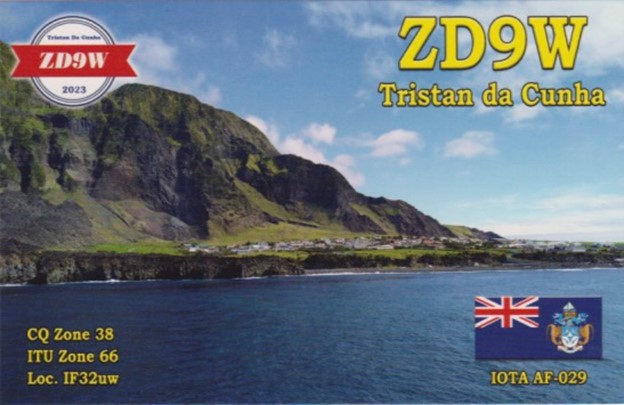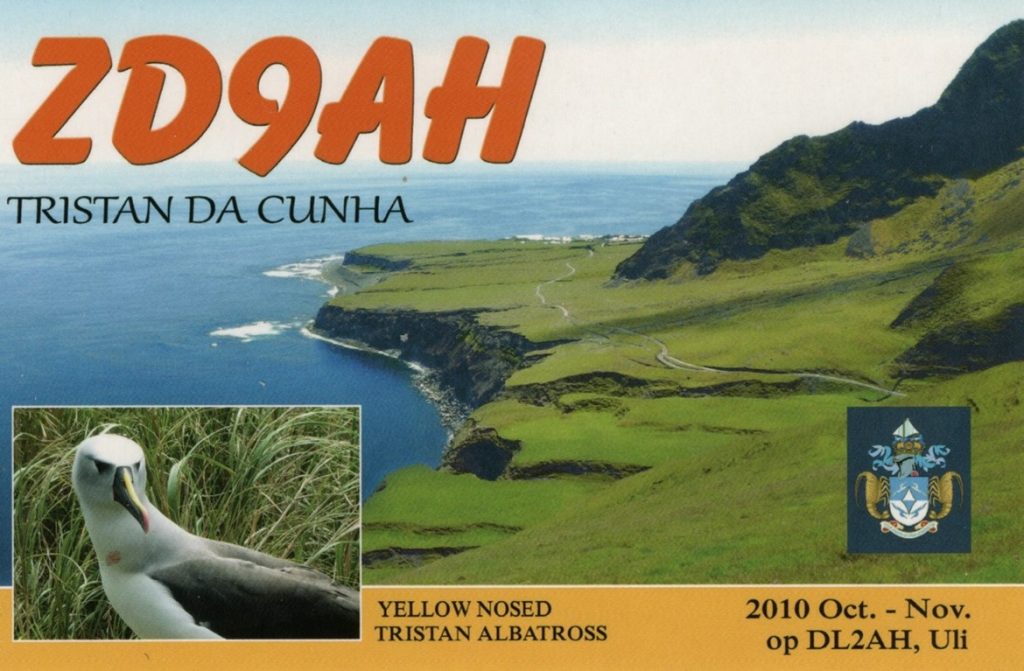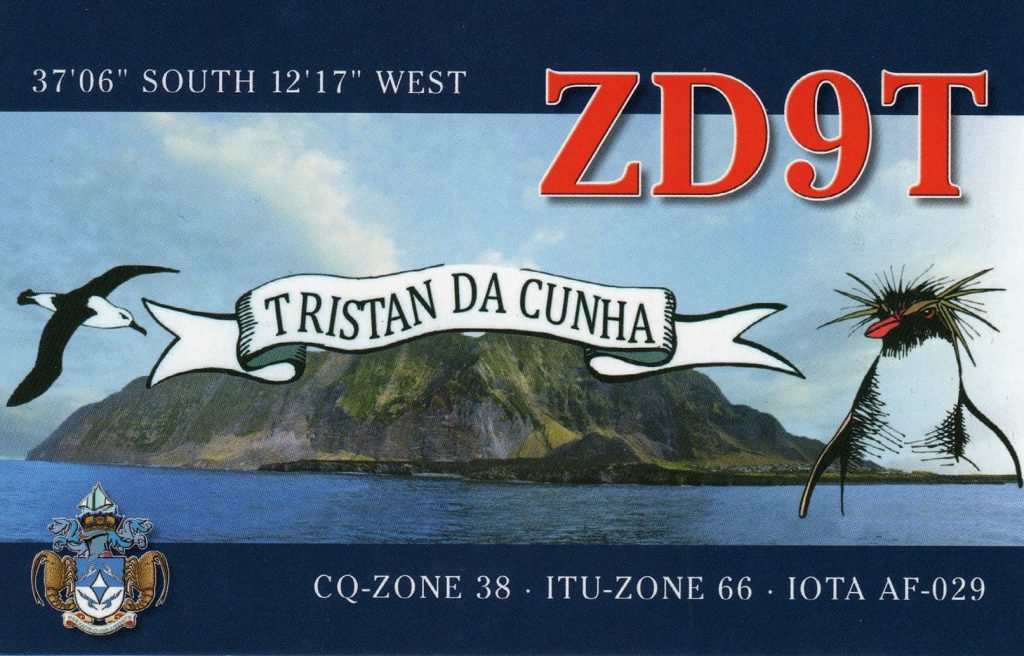Tristan da Cunha on the Air (Hopefully) Soon
Hams looking to add Tristan da Cunha —a collection of volcanic islands in the South Atlantic Ocean—to their list of DXing conquests may get an opportunity in the days ahead.
W7GJ reported that he would be operating from IOTA AF-029 the last week of August and into September, but a check of the DXpedition’s website, as of this posting, now has the dates as September 26 to October 25, depending on shipping schedules and very limited space availability on ships sailing from Cape Town, South Africa. The 6M ZD9GJ operation will mainly focus on EME, with some SSB and FT8 activity.
As of August, Tristan da Cunha/Gough Islands ranked as the 56th Most Wanted DXCC Entity per Clublog’s Most Wanted List.
About Tristan da Cunha
Only accessible by boat (about a six-day trip from Cape Town), the British Overseas Territory of Tristan da Cunha is the world’s most remote inhabited archipelago—about 1,700 miles off the coast of Cape Town, 1,500 miles from Saint Helena, 4,000 miles from Argentina, and 2,500 miles from the Falkland Islands. It lies 1,400 miles northwest of Bouvet Island—the most remote uninhabited spot on the planet. This makes Tristan da Cunha the closest inhabited land to Bouvet.
The archipelago, which experiences mild temperatures, little sunshine, and lots of rain, is made up of 38-square-mile Tristan da Cunha; the wild reserves of Gough Island and Inaccessible Island; and uninhabited 1.5-square-mile Nightingale Island.
A travel article from Business Insider placed the population of volcanic Tristan da Cunha at around 230. Inhabitants of Edinburgh of the Seven Seas (the only settlement on Tristan da Cunha, below) were forced to flee in lobster-fishing boats to neighboring Nightingale Island after an eruption of Queen Mary’s Peak in 1961 destroyed their settlement. They were resettled in England, but most returned two years later to rebuild on the island.
The island features a school, churches, the Tristan Thatched House Museum, a supermarket, administration building, and an invasive mice and rat population that nightly feeds, without natural predators to stop them, on seabird eggs and chicks. A community tradition known as “Ratting Day,” which began as a way to reduce the island’s rodent population, has evolved into a competition in which teams compete to catch the largest number of critters, with honors also being given to the team who produces the rat with the “longest tail.” One academic article noted that “Black Rats…reached the island from a shipwreck in 1882.”
A single road connects Edinburgh of the Seven Seas with the island’s communally owned potato farms. Transportation is provided by a few privately owned vehicles and a bus.


QSL Cards
The avid DXers at DX Engineering have made several contacts with operators who have received permission to operate on Tristan da Cunha over the years. Here are a few of the QSL cards from their collections.
Wayne, K8FF, DX Engineering customer/technical support specialist, received this card from the ZD9W DXpedition.

Scotty, KG9Z, DX Engineering customer/technical support specialist, provided us with this QSL card from ZD9CC.

Tom, KB8UUZ, DX Engineering technical writer, received the QSL card below from ZD9ZS.


George, K3GP, DX Engineering customer/technical support specialist, received the QSL card below from ZD9AH. It features the island’s main road, a yellow nosed Tristan albatross, and Tristan da Cunha’s coat of arms. Look closely. The coat of arms includes two Tristan rock lobsters, mainstays of the island’s economy.


Dave, K8DV, DX Engineering customer/technical support specialist, contacted ZD9T in November 2010 on 30 and 12M CW. The QSL card shows a drawing of a northern rockhopper penguin (known by islanders as “pinnamin”). The flightless birds breed on all islands in the Tristan da Cunha group. Read much more about the northern rockhopper penguin and everything else you’d want to know about this fascinating archipelago at the Tristan da Cunha website.

For all your amateur radio needs—whether you’re trying to contact the remotest spots on the planet or your local repeater, visit DXEngineering.com for transceivers, amplifiers, antennas,
headsets, and so much more.
Editor’s Note: Every month, DX Engineering features QSL cards from our team members’ personal collections. To highlight upcoming DXpeditions, we’ll be displaying a few of our favorite cards along with details about what it took to make these contacts. We’re excited to share some of the special cards pulled from the thousands we’ve received over the years. We look forward to seeing your cards as well!

